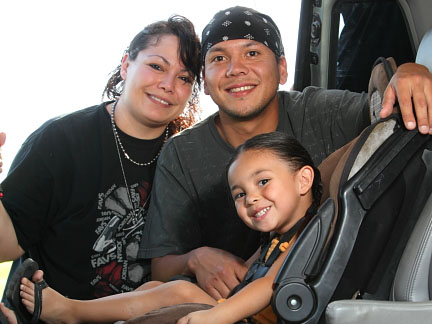
Understanding how beliefs, attitudes, and customs affect individual identity and choices can be essential for the success of your campaign to improve child car seat use in your community. If you have explored Module 3 and Module 4 on quantitative data collection, you will have a good idea of how valuable collecting quantitative data can be. You may also want to consider collecting qualitative data. Qualitative data reveals insights that quantitative data collection might miss. Consider Tam’s story below to gain context into how qualitative data can be different from quantitative data.
In this module, you can learn how:
- Qualitative methodology can be used to explore questions or explain assumptions about child passenger restraint use in your community
- To collect qualitative data through elicitation interviews and focus groups
- To code transcripts and identify themes that might be affecting car seat use in your tribe
Consider Tam’s Story:
On a recent trip to a city I had never visited before, I had a walking map loaded onto my smart phone to guide me and allow me to explore. Although I had a definite course outlined for me that day, along the way I found a sign posted on the wall of a library that interested me. I abandoned the course and entered the library doors, where I found there was even more interesting signs on a display indicating local authors would be reading that night in one of the auditoriums in the library. Once I found my seat and the author began speaking and reading excerpts from his book, I found there were viewpoints I hadn’t considered before. Some rang so clear to me. They helped me more fully understand the people in the story.
As I waited in line to have my new book signed after the reading, it struck me that this is exactly what qualitative research is like. You may have designed a focus group with an intended destination in mind, such as, “I need to know what the barriers of car seat use are.” You may have some actual data assumptions in mind to help develop questions to be posed to the focus group. But you also have moments within the journey of the actual data collection where you have a unique opportunity to allow the fluidity of a focus group to take different paths and open doors. These paths may to lead you to information you never knew existed or never knew you needed.
With quantitative data, you need to have inherent assumptions about the parameters in which the answer can be found. To design clear questions that allow you to count answers, you need to define variables and narrow respondents answers, so that those answers create useable statistics. With qualitative data, the answers are less restrained. You are free to roam, as I was that day on my trip in the city. I had an intended path, but I was also free to look in other directions as opportunities for more information presented themselves. Because I was able to wander and explore, I had a richer understanding and found answers to questions I did not know it was important to ask.

